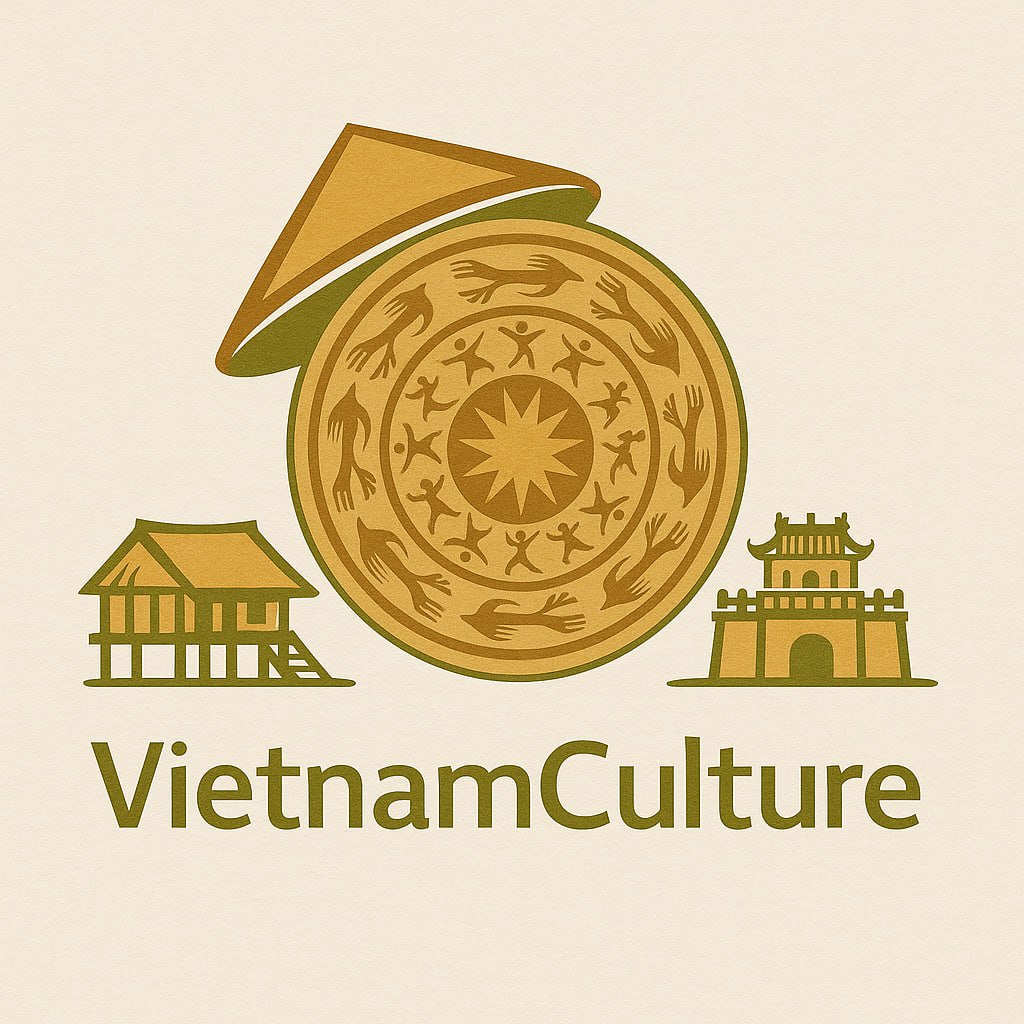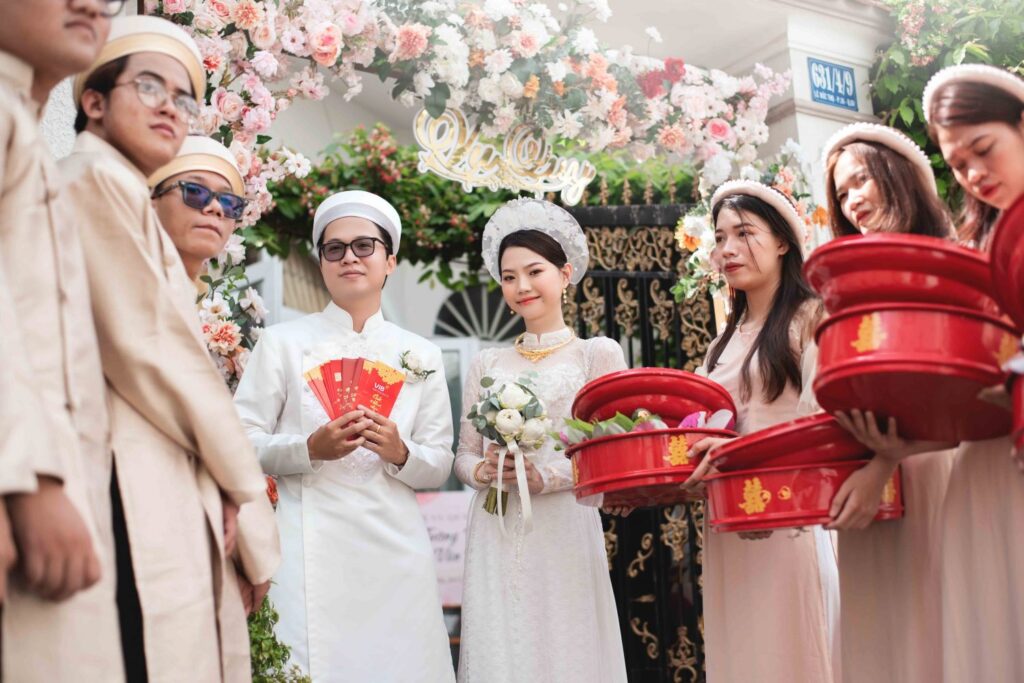Marriage is one of the most significant milestones in human life, and in Vietnam, it’s not merely a romantic union between two individuals — it’s a deeply rooted cultural event shaped by centuries of customs, values, and social responsibilities. From engagement to wedding day, every step is filled with symbolism, respect, and reverence for family and ancestors.
For travelers and culture lovers seeking to understand the soul of Vietnam, learning about Vietnamese traditions in marriage opens a window into the nation’s heart. This article takes you on an immersive journey through Vietnam’s matrimonial rituals, regional variations, and how these beautiful customs adapt in the modern world — all while preserving the core values of Vietnamese identity.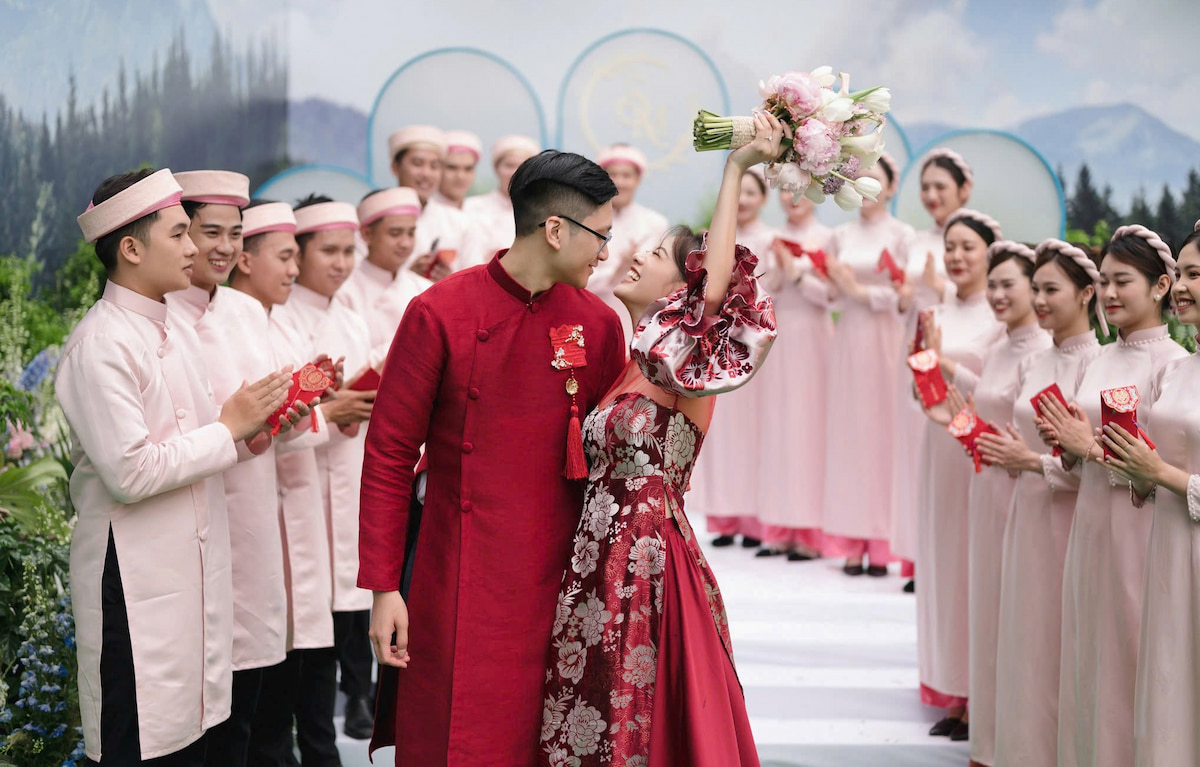
1. Overview of Vietnamese Traditions in Marriage
Vietnamese traditions in marriage reflect a blend of spiritual beliefs, family-centered values, and social harmony. These traditions serve to:
- Unite not just two people, but two families and their ancestral lines.
- Celebrate the transition from childhood to adulthood.
- Strengthen community ties through ceremonies and feasts.
- Uphold moral and spiritual duties to parents and ancestors.
Unlike Western weddings that focus primarily on the couple, Vietnamese weddings emphasize family approval, cultural symbolism, and spiritual blessings.
2. Marriage as a Family and Community Event
In traditional Vietnamese culture, marriage is considered a matter of family and community, not just the personal choice of two individuals. Parents historically played a major role in matchmaking and approving a partner based on family background, morality, social compatibility, and often astrology.
The concept of “môn đăng hộ đối” (equal social status) was particularly strong in Northern Vietnam. However, this rigid practice softened in Central regions and became far more relaxed in Southern Vietnam, especially in the Mekong Delta region, where romantic love and personal compatibility gained more importance.
Here, the saying “hôn nhân bất luận phú bần” — “marriage regardless of wealth” — reflects a more open and progressive view of love and union.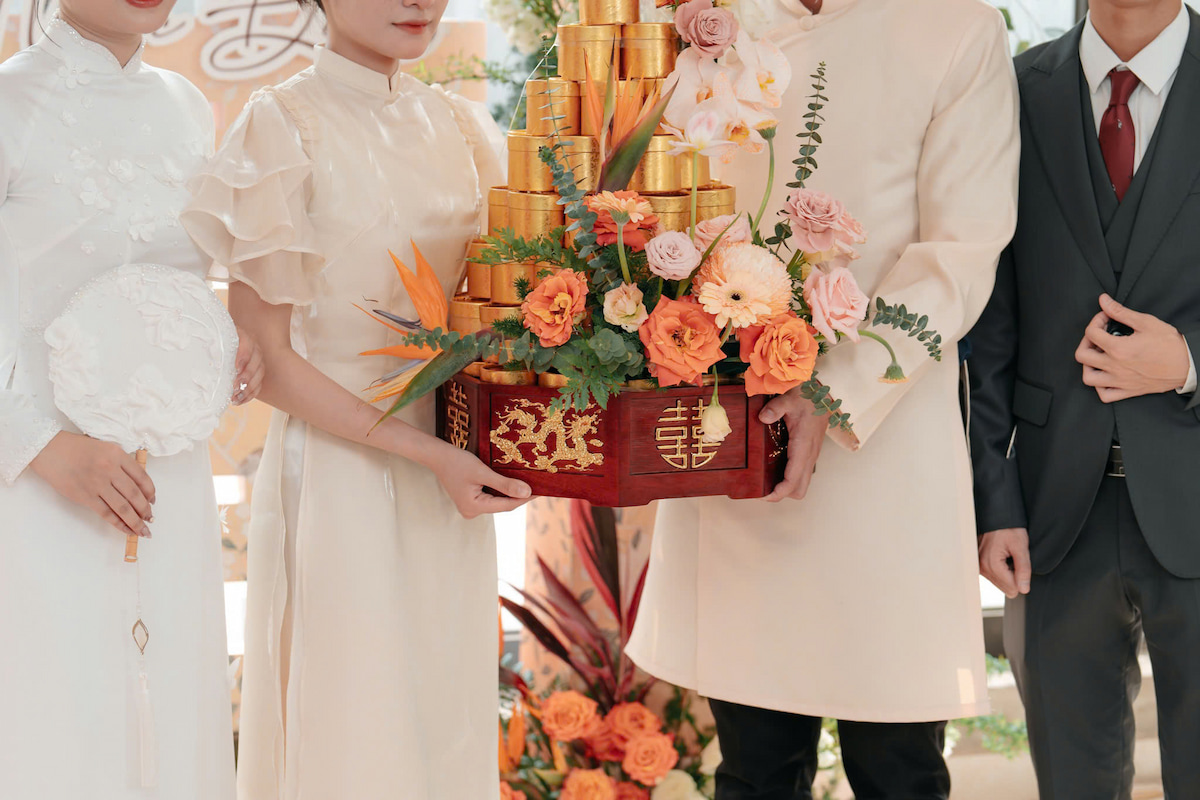
3. Key Rituals in Traditional Vietnamese Marriage
Vietnamese marriage is a multi-step process involving six major ceremonies. These rituals blend Confucian, Buddhist, and animist elements and are adapted differently across regions and generations.
🏮 1. Lễ dạm ngõ – The Initial Family Visit
Also called the “gate-crashing ceremony,” this event marks the first official meeting between the families. The groom’s family visits the bride’s home to express the intent to court their daughter.
- Purpose: Establish initial goodwill and approval.
- Offerings: Trầu cau (betel leaves and areca nuts), tea, fruits.
- Significance: Creates the foundation for a respectful, formal relationship.
💍 2. Lễ ăn hỏi – The Engagement Ceremony
This is the most elaborate pre-wedding ritual where the groom’s family presents gifts to the bride’s family.
- Offerings: Elaborate trays of traditional items like wine, cakes, betel leaves, roasted pigs, and jewelry.
- Attire: The bride and groom wear traditional ao dai (Vietnamese long dress).
- Activities: Formal ancestor worship, ring exchange, and blessing from both families.
This ritual is the equivalent of an engagement and symbolizes the binding of two families.
💐 3. Lễ xin dâu – The Request for the Bride
On the wedding day, the groom’s representatives return to the bride’s house to respectfully request to bring her to his home.
- Timing: Happens shortly before the wedding ceremony.
- Custom: Representatives from both sides discuss logistics, timing, and give final blessings.
- Meaning: It shows respect to the bride’s parents and formally begins the marriage ceremony.
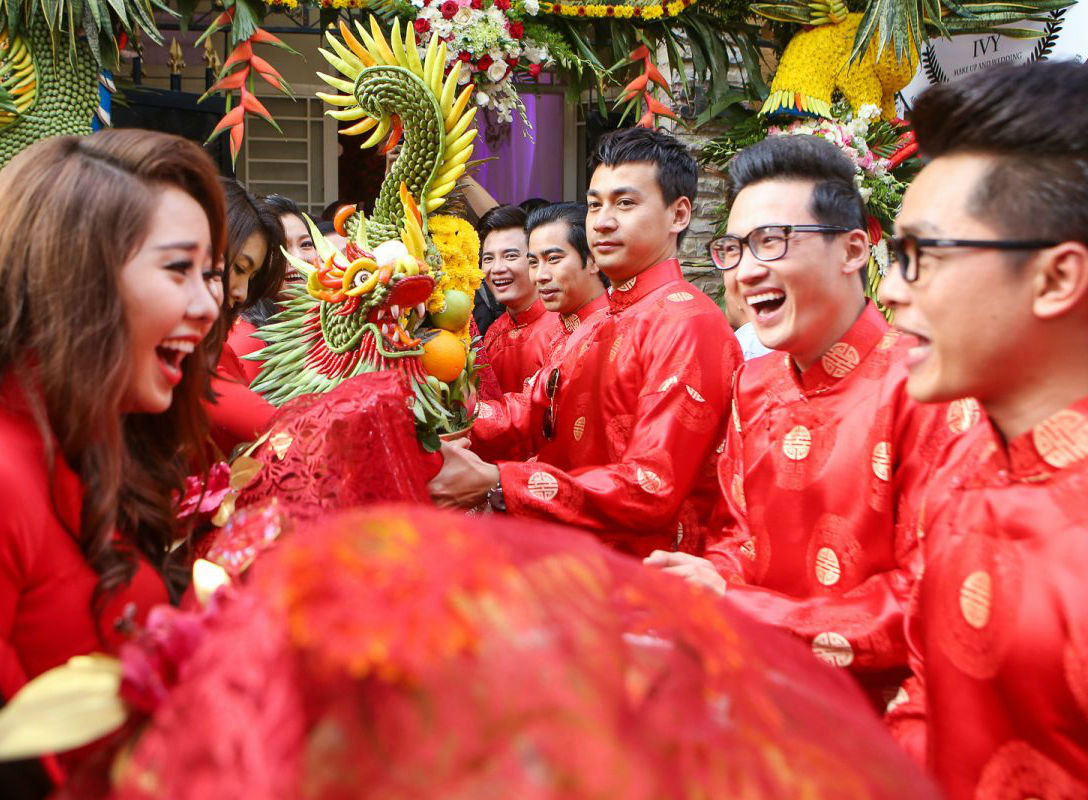
🚗 4. Lễ rước dâu – The Bridal Procession
This is the joyful ceremony where the groom and his family officially receive the bride.
- Procession: A parade of family members, musicians, and decorated vehicles.
- Ceremony: The bride leaves her home, bows to ancestors, and joins the groom.
- Destination: The bride is taken to the groom’s home, where further rituals occur.
This step marks the transition of the bride into her new family.
🕯️ 5. Lễ cưới – The Wedding Celebration
The most festive part of the entire process, this event is hosted by both families, traditionally at the groom’s house, though now often held in banquet halls.
- Guests: Friends, relatives, colleagues.
- Ceremony: Introduction of the couple, blessing speeches, toasts, and gift-giving.
- Attire: The bride may wear both a traditional ao dai and a Western-style gown.
🍚 6. Lễ lại mặt – The Return Visit
A few days after the wedding, the bride and groom return to the bride’s home.
- Purpose: Show gratitude and maintain close ties with the bride’s family.
- Gifts: Simple offerings like fruits, cakes, or tea.
It serves as a symbolic act of respect and reconnection with her birth family.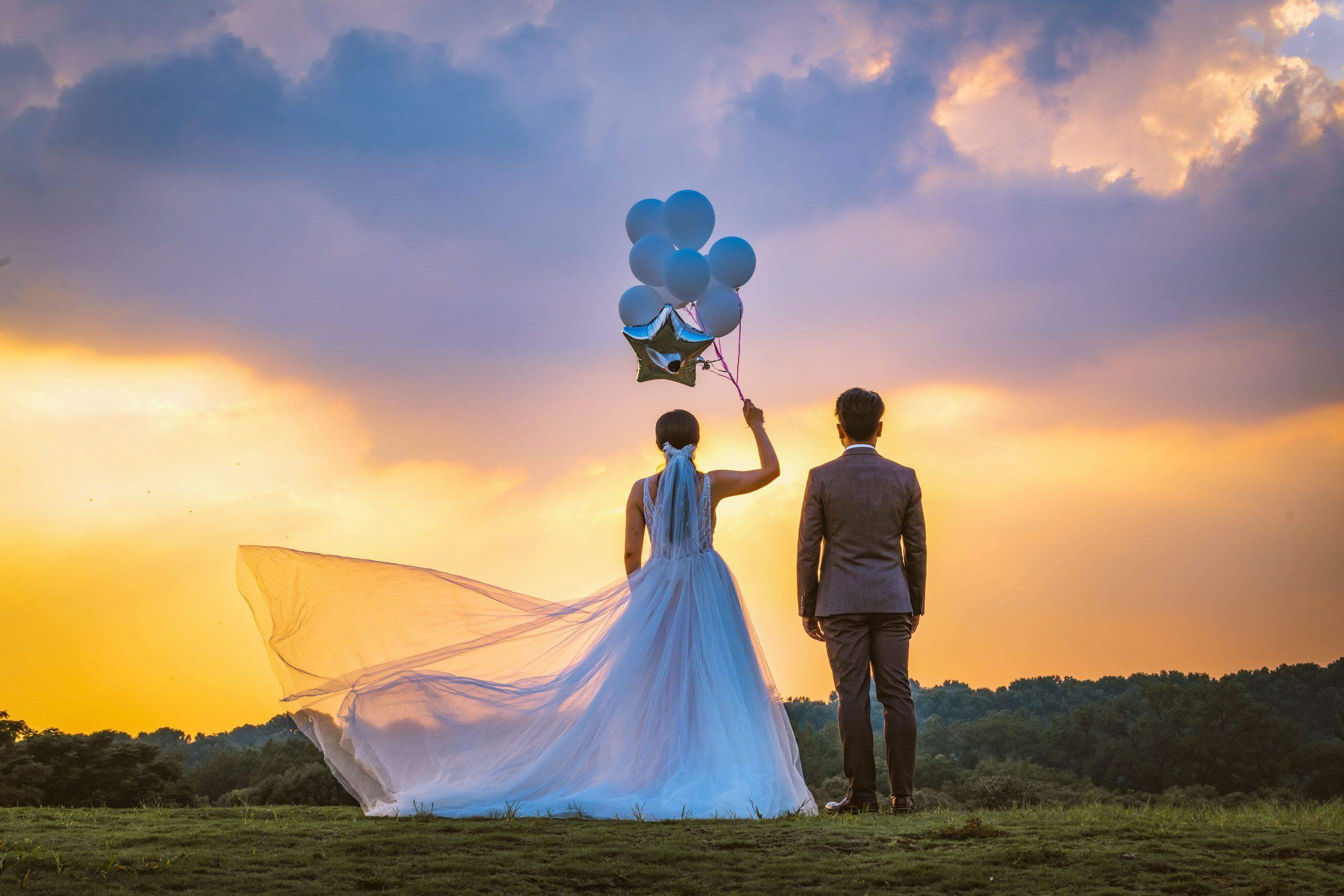
4. Symbolism in Vietnamese Wedding Traditions
🧧 Betel and Areca Nut (Trầu Cau)
Symbolizes fidelity, respect, and the inseparability of husband and wife. Often offered first during any engagement or marriage ceremony.
🏠 Ancestor Worship
Both families perform rituals at ancestral altars to honor the spirits and ask for blessings.
🌿 Ao Dai and Traditional Dress
The bride typically wears red or gold ao dai, symbolizing luck and happiness. The groom often wears a matching outfit with a headpiece (khan dong).
🎎 Gifts and Offerings
Traditional gifts reflect prosperity and shared responsibility — from roasted pigs to wedding cakes (banh phu the, meaning “husband and wife cake”).
5. Regional Variations in Vietnamese Marriage Traditions
Vietnam’s cultural diversity means wedding customs vary significantly across its three regions.
🏯 Northern Vietnam
- Highly formal with strict attention to ritual.
- Strong family involvement and social hierarchy.
- Full sequence of six traditional ceremonies often maintained.
🏞️ Central Vietnam
- Emphasis on astrology: choosing auspicious wedding dates and times.
- Moderate rituals — balanced between Northern formality and Southern openness.
- Unique regional dishes and decorations.
🌾 Southern Vietnam (especially Mekong Delta)
- More relaxed and personal.
- Families often encourage mutual love and compatibility.
- Ceremonies simplified but maintain symbolic gestures like Lễ lên đèn (Lamp-Lighting Ceremony), praying for ancestral blessing.
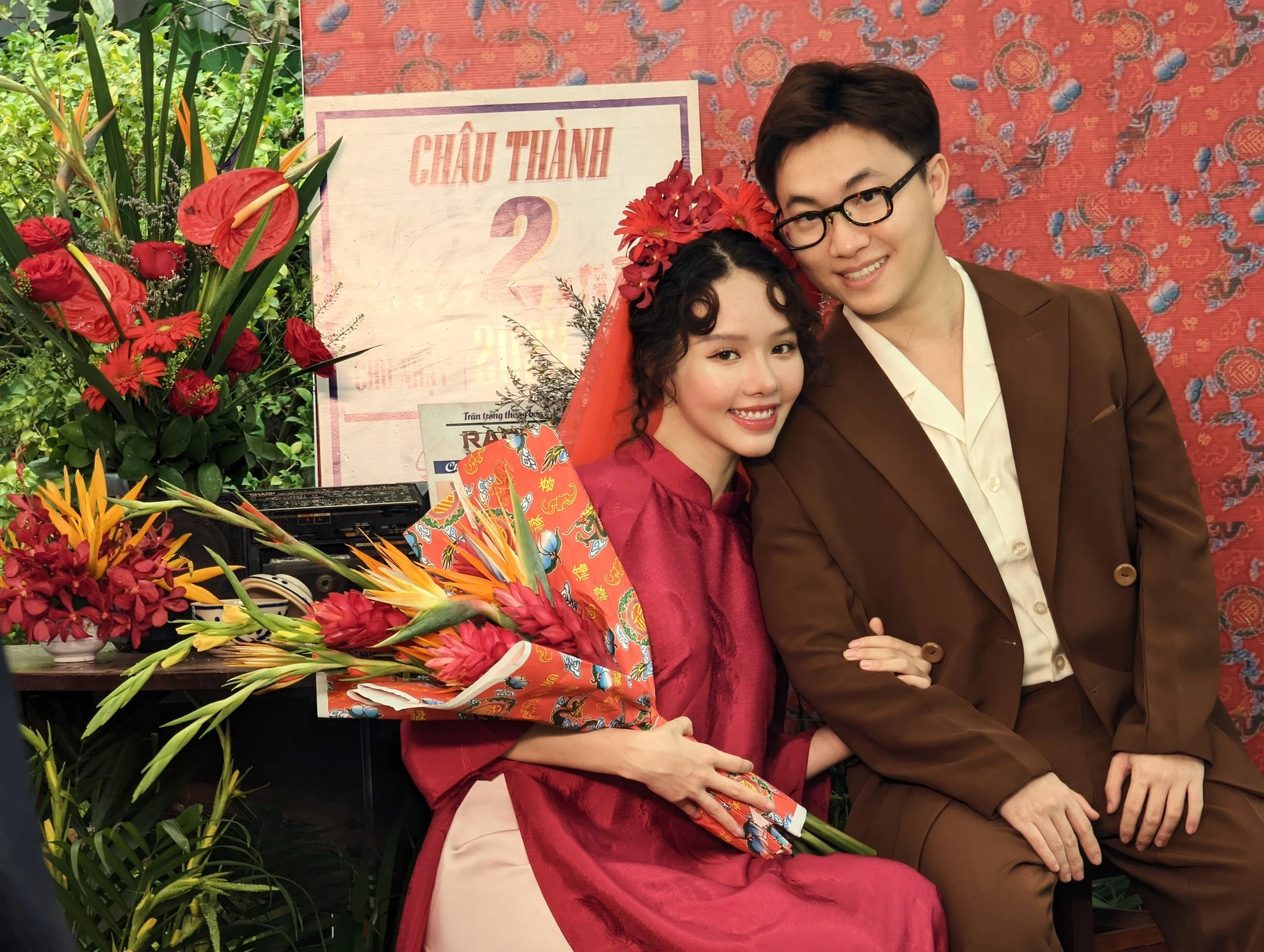
6. The Role of Parents and Matchmaking
Historically, matchmaking was often handled by elders or professional matchmakers, especially in the North. Love was not always the priority; compatibility of families, astrology, and social status mattered more.
In contrast, today’s couples often meet through school, work, or social events. Still, parental approval remains crucial, and most weddings involve careful negotiation and compromise between generations.
7. Modern Transformations in Vietnamese Weddings
While many Vietnamese families still preserve traditional elements, modern weddings now often include:
🎊 Modern Wedding Venues
Hotels, resorts, and restaurants have replaced traditional home-based weddings.
📷 Pre-wedding Photoshoots
Couples pose in scenic locations such as Đà Lạt, Hội An, or Ninh Bình, often wearing both Western and traditional outfits.
🎼 Fusion Ceremonies
Ceremonies may feature traditional rituals followed by Western-style receptions, complete with a wedding cake, champagne tower, and dance floor.
8. Cultural and Legal Considerations
- Minimum legal age for marriage in Vietnam: 20 for men, 18 for women.
- Incest laws prohibit marriage between close relatives (up to three generations).
- Gender equality is promoted in modern Vietnam, but traditional expectations regarding roles in marriage still influence some communities.
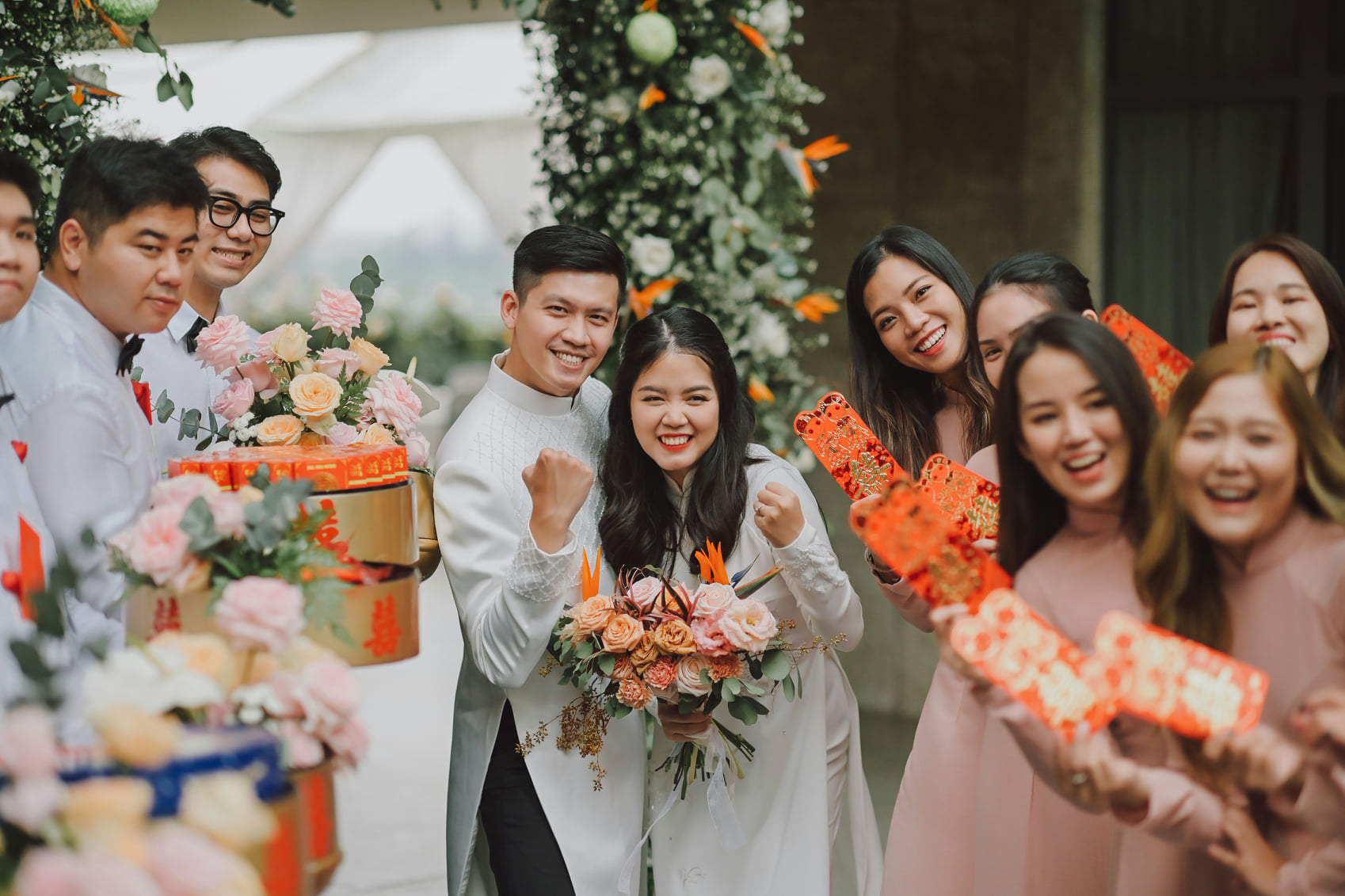
9. Experiencing Vietnamese Marriage Traditions as a Visitor
Want to experience these customs firsthand? Here’s how:
🌺 Attend a Local Wedding
If you’re traveling with Vietnamese friends, you may be invited to attend a wedding — an opportunity not to be missed!
🏡 Homestays in Rural Areas
Some villages in Northern Vietnam or the Mekong Delta offer cultural experiences including wedding reenactments or festivals.
🎭 Visit a Cultural Museum
Museums such as the Vietnamese Women’s Museum in Hanoi or the Southern Women’s Museum in Ho Chi Minh City often have exhibits on traditional marriage customs.
10. Final Thoughts: Vietnamese Traditions in Marriage as a Living Legacy
More than mere ceremonies with Vietnam Culture, Vietnamese traditions in marriage represent a living, breathing legacy — one that connects generations, unites families, and reflects the enduring values of respect, harmony, and love.
Whether through the joyful procession of a lễ rước dâu, the elegance of a red ao dai, or the quiet reverence of a prayer to ancestors, Vietnamese marriage traditions offer a rich cultural tapestry that continues to evolve without losing its roots.
If you’re exploring Vietnam, take time to learn about these rituals — they’ll show you that in this country, love is never just about two people; it’s about family, heritage, and the beauty of connection.
See more post: Vietnamese philosophy: Exploring the heart of Vietnamese culture
